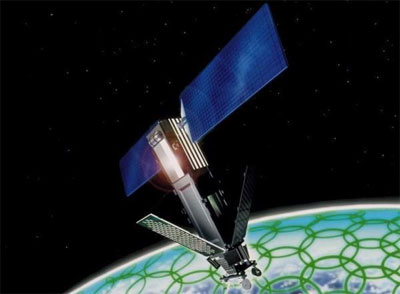Iridium: were they right too soon?by Taylor Dinerman
|
| Since the original Iridium went bankrupt in 1999, demand for bandwidth has not stopped growing, and the telecommunications industry has not stopped trying to find ways to make money meeting that demand. |
An investor group bought Iridium’s assets for less than one cent on the dollar and now, thanks to having a $5-billion asset handed to them for a proverbial song, are making profits. Industry analysts expect that sometime before the end of this year they will choose either Thales Alenia Space or Lockheed Martin to build the next $2.7-billion set of satellites to replace the ones now in orbit. These new spacecraft, the company claims, will be able to handle more data and more phone calls than their predecessors.
Since the original Iridium went bankrupt in 1999, demand for bandwidth has not stopped growing, and the telecommunications industry has not stopped trying to find ways to make money meeting that demand. For a while it was thought that enough fiber optic cable hand been put in place worldwide to meet the requirements. However, the wireless world and its needs are putting a whole new set of stresses on the scientists and engineers who are creating technology to meet the expectations of consumers worldwide who want more functions and more reliability at lower costs, and who are not going to be happy unless they get them.
Iridium’s principal competitors in the business, Globalstar and ORBCOMM, are also planning to replace their current satellites with newer and better ones. ORBCOMM announced a deal with SpaceX last week to launch 18 second-generation spacecraft that the company claims will provide machine to machine (M2M) capability “up to 12 times over the current satellite constellation.”
Globalstar, meanwhile, is in trouble, as its operational satellites have degraded and its revenues have dried up. Its deal with Thales Alenia for a new generation of spacecraft appeared to be in jeopardy until the French export credit agency Coface stepped in earlier this year to secure a $586-million credit facility with a syndicate of banks.
A new competitor, O3b Networks (the name refers to the “Other 3 Billion” people on the planet without broadband access), is trying to get off the ground. Its goal is to provide services to the Third World, an effort that is laudable, but may not be profitable. On the other hand, the technology may have developed to the point where such a venture could be cost effective. Low-cost handsets combined with mass-produced highly capable satellites and cheap and reliable launch services indicate that the idea could be made to work—provided the customers have enough minimum income to pay for the services.
This new technological reality has important implications for the US military and for the armed forces of other major powers, who all depend on satellite communications. If Iridium can build a whole constellation of satellites for less than $3 billion, or roughly the expected price of a single T-Sat spacecraft once they were in production, why should the Defense Department not be expected to be able to build systems that cost no more than twice as much?
| If Iridium can build a whole constellation of satellites for less than $3 billion, or roughly the expected price of a single T-Sat spacecraft once they were in production, why should the Defense Department not be expected to be able to build systems that cost no more than twice as much? |
What may make these LEO satellite systems valuable for the Pentagon is that they are distributed and easy to upgrade. The GPS constellation shows that, when they want to, the Defense Department can build a system that is fairly easy to upgrade in an incremental fashion. A set of 60–70 small communications satellites linked together with robust ground control centers could provide the basis for a long-term answer to the still unfulfilled T-Sat bandwidth requirement. The user elements of such a system could be designed and deployed almost as easily as the civilian industry builds and sells new handheld communication devices.
The results of DARPA’s F6 fractionated space architecture experiment due to be launched in 2012, which uses separate modules for payload power and control functions linked together with wireless technology, should be useful. If this works, integrating this technology into future LEO constellations is one obvious way to improve on what is available today.
For decades now civil and military communications technology have been cross-fertilizing each other. Unless someone does something extremely stupid this will undoubtedly continue. The sad lesson from the original Iridium project is the one from the Old West: “How can you tell who was a real trailblazer? He’s the one with the arrows sticking out of his chest.”
